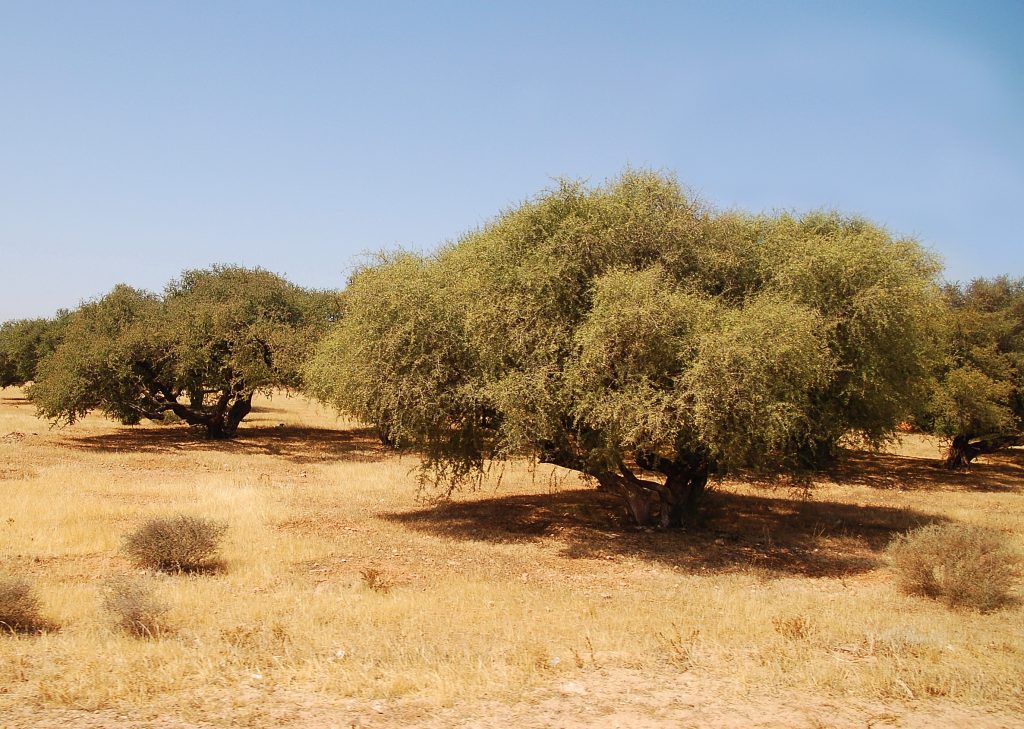
The fruit of the argan tree is small, and round, oval, or conical. A thick peel covers the fleshy pulp. The pulp surrounds a hard-shelled nut that represents about 25% of the weight of the fresh fruit.
The nut contains one to three oil-rich argan kernels. Extraction yields from 30% to 50% of the oil in the kernels, depending on the extraction method.[10] It takes about 40 kilograms (88 lb) of dried argan fruit to produce only one litre of oil.[6]
Extraction is key to the production process. To extract the kernels, workers first dry argan fruit in the open air and then remove the fleshy pulp. Some producers remove the flesh mechanically without drying the fruit. Moroccans usually use the flesh as animal feed. A tradition in some areas of Morocco allows goats to climb argan trees to feed freely on the fruits. The kernels are then later retrieved from the goat droppings, considerably reducing the labour involved in extraction at the expense of some potential gustatory aversion.[11][12] In modern practice, the peels are removed by hand.[13]
The next stage involves cracking the argan nut to obtain the argan kernels. Attempts to mechanize this process have been unsuccessful, so workers still do it by hand, making it a time-consuming, labour-intensive process. Berber women often engage in this arduous task.
Workers gently roast kernels they will use to make culinary argan oil. After the argan kernels cool, workers grind and press them. The brown-coloured mash expels pure, unfiltered argan oil. Finally, they decant unfiltered argan oil into vessels. The remaining press cake is protein-rich and frequently used as cattle feed.[10]
Cosmetic argan oil is produced almost identically, though the argan kernels are not roasted to avoid an excessively nutty scent.
The decanted argan oil is left to rest about two weeks so the suspended solids settle to the bottom. The clearer argan oil is further filtered, depending on the required clarity and purity. Pure argan oil may contain some sediment.